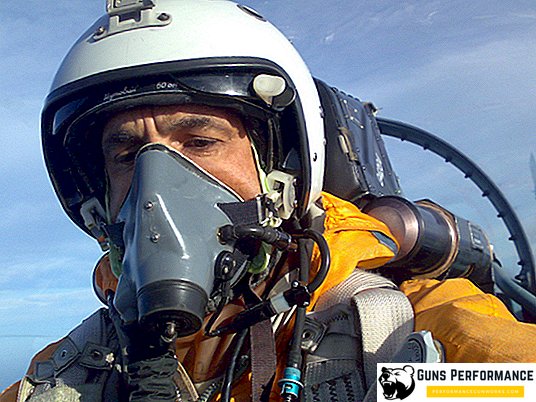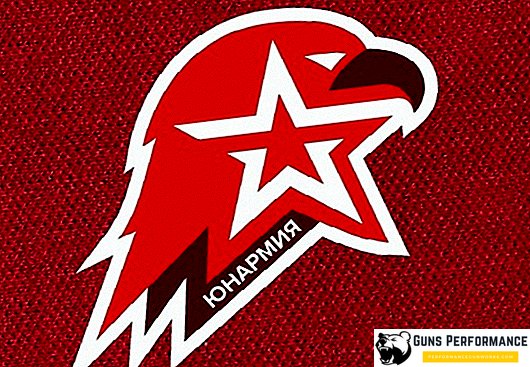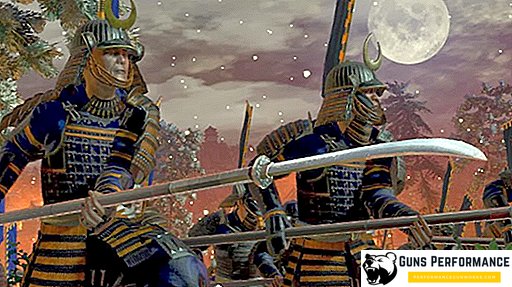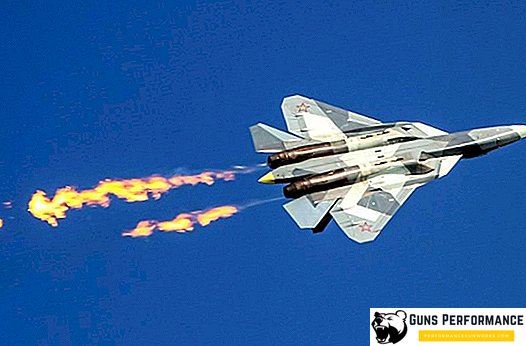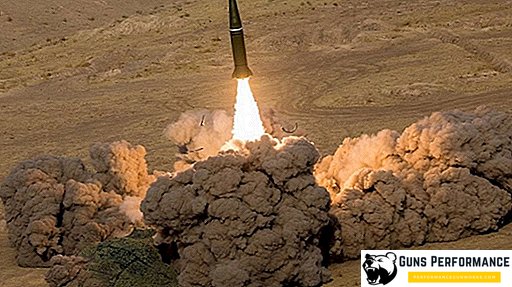GAZ-MM - Soviet truck, which was produced by the Gorky Automobile Plant. In the people it was called "half-work" because of the carrying capacity of 1.5 tons. The car is an improved version of "AA". The main difference is a more powerful engine. External differences between the two models were not.
General information about GAZ-MM
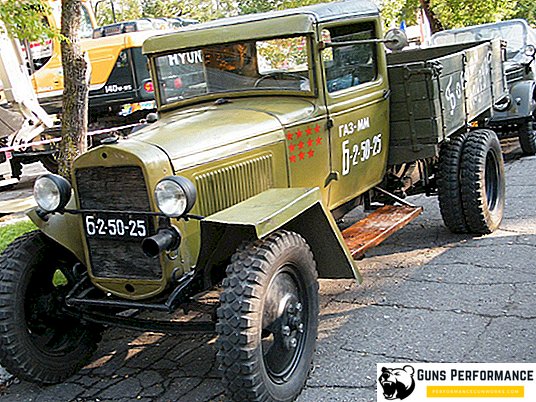
The car was produced for a long time, and in different years enterprises from all over the country were involved in the assembly. Gorky plant produced MM from 1937 to 1948. In the 47th year of the last century, production capacity was transferred to the UAZ (until 1956). The first two years to fully run the conveyor with an improved truck did not work. The reason was the shortage of the required power units, which went to the more priority cars in the pre-war years: AAA and BA-10. Mass production started in 1940, which lasted until 1956.
There is unofficial information that from 1950 to 1956 in Ulyanovsk they did not assemble new cars, but carefully repaired the old ones, equipping them with new parts.
During the Great Patriotic War, due to a lack of resources, engineers switched to a simplified version that received an MM-B index. On its base, they managed to create several modifications. The cab was made of wood in those years, a tarpaulin was installed on the roof. In the 42nd year, several large batches deprived the door, replacing them with tarpaulin safety valves. Angular wings made of any suitable iron, just bending it to the desired shape. After the war, the production technology of the wings did not change.
A large number of working copies of the GAZ-MM was in service with the Red Army until 1962. In this year, a decree was issued banning the operation of vehicles with a mechanically actuated brake, as a result of which all models were written off.
Over the entire history of production, they managed to produce about 200 thousand copies. Transport was one of the most popular in the Red Army. He was appreciated for the simplicity of the design, so that drivers could carry out operational repairs in the field. The quality of many power units left much to be desired, therefore frequent breakdowns occurred.
Construction GAZ-MM
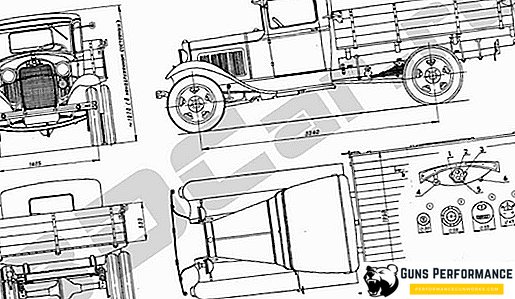
The GAZ-MM, like its predecessor, was notable for its simple design. The basis of the transport was a frame chassis with a spring suspension. In those years, most of the small trucks were going on such a scheme. Cabin plumage taken from the GAZ-A and adapted to the lorry.
Description of technical characteristics:
- Length - 5.2 m;
- Width - 2 m;
- Height - 1.9 m;
- Ground clearance - 20 cm;
- Wheelbase - 3.3 m;
- Wheel formula - 4x2;
- Weight - 1.75 tons;
- Motor power - 50 hp;
- The maximum speed is 70 km / h.
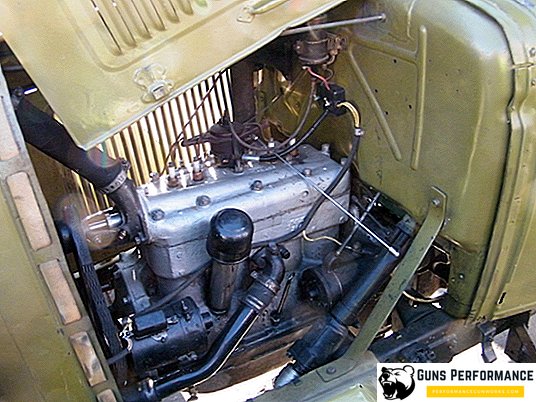
The main difference from the AA was the new power plant. Engine GAZ-MM underwent modifications, so that engineers were able to increase power from 40 to 50 horsepower. The motor remained the same unpretentious. The standard fuel was gasoline AI-52, but drivers often filled the car with kerosene. As a lubricant used autohol and nigrol used in industry. The power unit worked together with a manual transmission, which had four stages - three front and one rear.
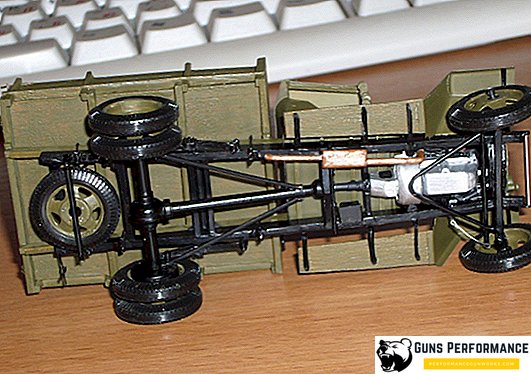
The device of the rear suspension and transmission was unique. The pushing pipe acted as a longitudinal thrust. Inside it was a closed-type drive shaft, which became stronger in the improved model. The main disadvantage of this design was the constant contact of the beam with a bronze bushing. Because of this, the latter quickly lost its quality and failed. The designers also improved the front suspension. They changed the attachment of jet thrust, as a result of which increased the stock of working resource. But you can’t call a significant increase: during the war the truck was exploited with constant overload, which led to fatal damage.
Starters were battery powered. During the period of the Second World War, they were in severe shortages, besides often broke. With great luck, they served a little more than six months. In order not to waste time on replacing the starter, the drivers started the transport by means of the handle. The weak places were tires, the working resource of which did not exceed 8-9 thousand kilometers. The wheels had a size of 6.00-520.
Despite the lack of resources, GAZ-MM and AA became the most popular cars in the pre-war and war years. The number of issued copies of both models and their varieties was slightly less than a million. On the base of the chassis they collected many types of special-purpose equipment, which was used for military and economic purposes. Many technical units are unified when creating new combat vehicles, light tanks, BA-6 and BA-10.
Modifications GAZ-MM
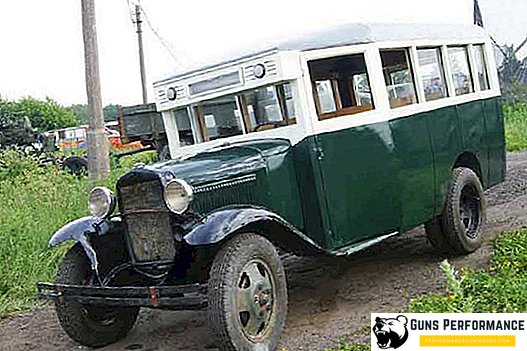
On the basis of the GAZ-MM, the specialists of the Gorky Automobile Plant developed several varieties:
- MM-B is a simplified version of the truck. In the first years of the war, because of a strong lack of materials, the car was deprived of the roof and the doors (tarpaulin was used instead). After 1944 the wooden roof and doors were returned to the transport. To speed up the assembly process, the technology eliminated the silencer, bumper and front brakes. Faro and the wiper left only on the driver's side. The tailgate leaned back against the body;
- 410 (1938-1950) - a dump truck built on the MM chassis. He carried loads weighing up to 1,200 kilograms, had a self-discharge function. The platform was made of metal. Data on the number of collected copies are not available;
- 42 (1938-1949) - the standard 50-hp engine was replaced by a gas generator. Wooden chocks were used as fuel, which made it possible to develop power up to 38 horsepower. The truck carried up to 1,000 kilograms of cargo. 150–200 kg of payload was taken up by stock of chocks;
- 43 (1938-1941) - similar to the previous version. Engine dimensions were reduced, coal was used as fuel. The modification has not received wide distribution, having limited to small batches;
- 44 (1939) - a model that moved on liquefied petroleum gas. Fuel cylinders were placed under the cargo platform. In 1939, one small series left the assembly line;
- 60 (1938-1943) - half-track version. The caterpillar was made on the rubber-metal type. The standard bridge was responsible for driving it. The car used for movement in the snow-covered regions;
- 65 (1940) - the most unsuccessful development of Gorky specialists within this family. An experimental batch of vehicles with tracked-wheel propulsion failed to cope with a single polygon test. It also had a high fuel consumption, which was not allowed in the war years (60 liters per 100 km);
- 03-30 (1938-1950) - a bus designed for 17 passengers. The production involved a subsidiary of GAZ - Gorky Bus Plant. At the heart of the body lay a frame made of wood, decorated with metal panels. It was the most popular bus in the prewar and postwar years;
- 55 (1938-1950) - the most massive ambulance car, which was in service with the Red Army. Engineers improved the design and reworked the body. Maximum capacity is 10 people.
Much number of species is widespread. The technique made an invaluable contribution to the victory in the Second World War and to help in the restoration of the Union in the postwar years.
Peak glory lorry GAZ-MM
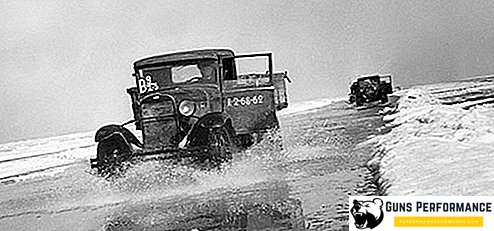
The car became a legend during the Great Patriotic War. The truck was considered the most common in the USSR. After the outbreak of hostilities, all copies of the national economy called on the Red Army. The number of working machines in the middle of 1941 was 151 thousand. MM was used to supply various departments and factories with resources throughout the country.
The greatest contribution of technology has invested in the passage of the blockade of Leningrad. In November, the enemy blocked all access routes to the city, as a result of which it became impossible to provide resources. On November 22, the first convoy of trucks with food left for Leningrad along the “Road of Life” passing through Lake Ladoga.
Freight transport overcame a long distance under constant shelling of the enemy. Despite the difficult working conditions, the transportation of resources took place every day until the end of winter. The thickest patches of ice were noted for ease of movement, while the controllers worked in severe frost, who were responsible for coordinating the movement in the event that the machines got into polynyas and cracks. Some drivers removed the hinges from the door so that in an emergency it was possible to quickly leave the vehicle.
The Road of Life worked practically until the end of April. In the middle of this month, the temperature rose to +15 degrees Celsius, which is why the ice began to actively melt. The road cover was covered with water (in some places the depth was 45 cm), but this did not stop the lorry on the way to the fulfillment of the tasks set. Officially, the movement on the lake was stopped on April 21, but some drivers continued to transport food and evacuate residents of the city until April 24. During the winter, numerous GAZ-MM transported a little more than 361 thousand tons of payload (of which 262 thousand tons are food).
What can be concluded?
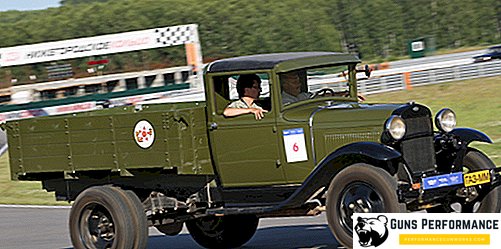
GAZ-MM - the legendary transport, which will forever remain in the history of our state. Each celebration of the end of the blockade of Leningrad is not complete without mentioning this truck, thanks to which tens of thousands of people have been saved. The drawings of the car were not preserved in the archives of the Gorky Automobile Plant. The only surviving specimen can be seen in the Museum of Domestic Military History, which is located in the village of Padikovo, Moscow region.


